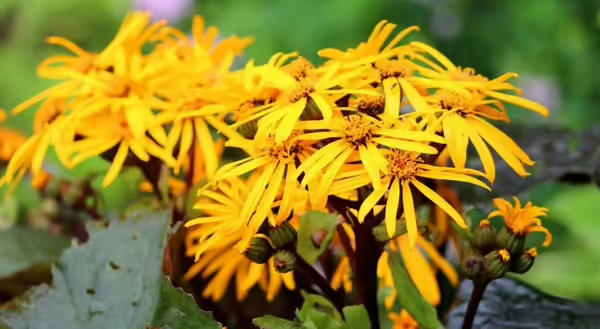
Gardening in the shade can be challenging. Few plants grow their best in low light conditions, and the plants that do often lack gorgeous blooms. If a lawn of large-leaved hostas is letting you down, experiment with uniquely textured foliage and distinct blossoms offered by shade-loving plants. You’ll be eager for a retreat from the heat to enjoy the additions in your summer shade garden.
When planting your shade garden, consider the type of shade (morning vs. afternoon) and the duration of shade. Partially shaded areas get 4 – 6 hours of sunlight per day; full shade areas get less than 4 hours of sunlight per day and sometimes no direct sunlight at all. Full shade areas are usually under dense tree canopies or covered patios on the north side of the house. To understand your shade conditions, spend time in your garden observing when the plants have direct sunlight and the duration of direct sunlight.
It is clear not all shade is created equal, even moisture levels vary in shade. Moist shade caused by cool temperatures is ideal for some shade plants but leads to root rot in others. Moss creeping in your garden bed may indicate high moisture levels. Shade gardens under trees or shrubs may experience dry shade conditions causing competition for water and nutrients. And all shade is a favorite spot for slugs to explore and snack.
To ensure a healthy plant, remember, right plant, right place. A plant grown in undesirable conditions will be stressed, unhealthy, and stunted. As a result, foliage color may be dull, and disease or pest problems may occur. Although beautiful blooms are a garden highlight, most plants showcase fewer flowers and brief bloom times in the shade.
With less focus on blooms, the strength of a shade garden is foliage. Texture, color and shape all add dimension and interest. Try mixing large coarse leaves like Bergenia and Lady’s mantle with finely divided leaves of Japanese painted fern. Or add plants with white and green variegated foliage like Solomon’s seal or liriope.
Perennial plants still ground a shade bed, even if bloom time is short, so focus on stunning, reliable, and distinct perennials. Some to consider planting are bigleaf ligularia (Ligularia dentata), large glossy leaves with 3-feet-tall daisy-like flowers; false spirea (Astilbe sp.), lacy foliage with large plume-like flowers; lungwort, (Pulmonaria sp.), rough, spotted leaves with pink or purple blooms; bugloss (Brunnera macrophylla), green to silver heart-shaped leaves with delicate blue flowers in the spring.
For a pop of color all summer long, add shade-loving annual bedding plants such as Ageratum, wax begonia, impatiens, and Torenia to the garden. Then fill in with shade-tolerant groundcovers, including wild ginger, sweet woodruff, and bugleweed.
PHOTO CREDIT:
ABOUT THE AUTHOR: Brittnay Haag is a Horticulture Educator with University of Illinois Extension, serving Livingston, McLean, and Woodford Counties. Her work focuses on youth horticulture education, specifically through school gardens and Jr. Master Gardener programs. Brittnay provides leadership for three county Master Gardener programs and is responsible for developing community programs and providing expertise in horticulture and environmental sciences.